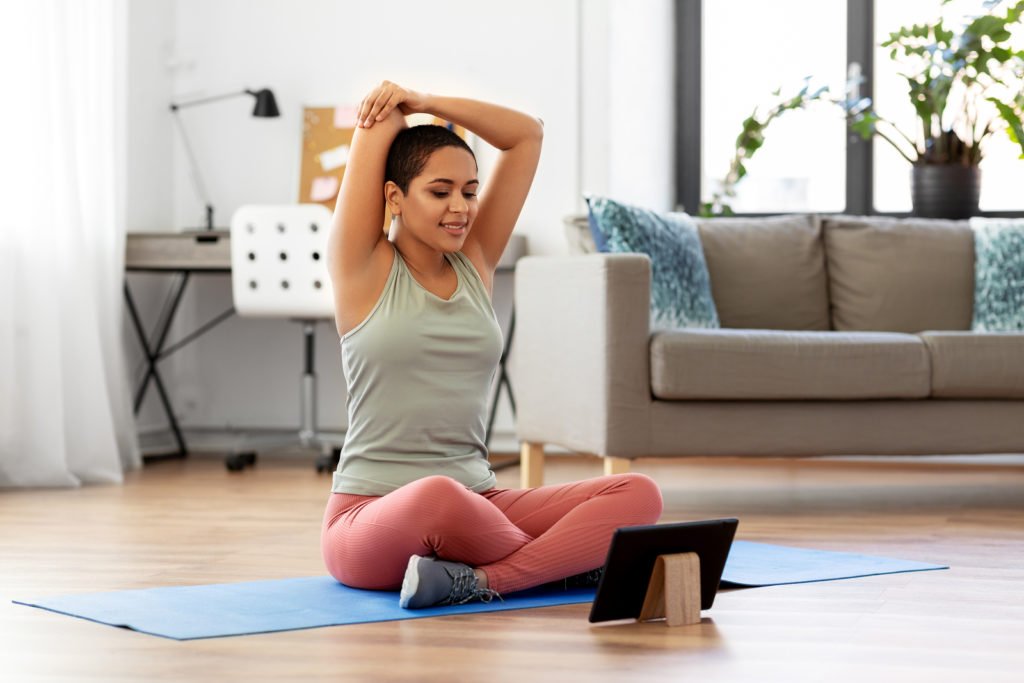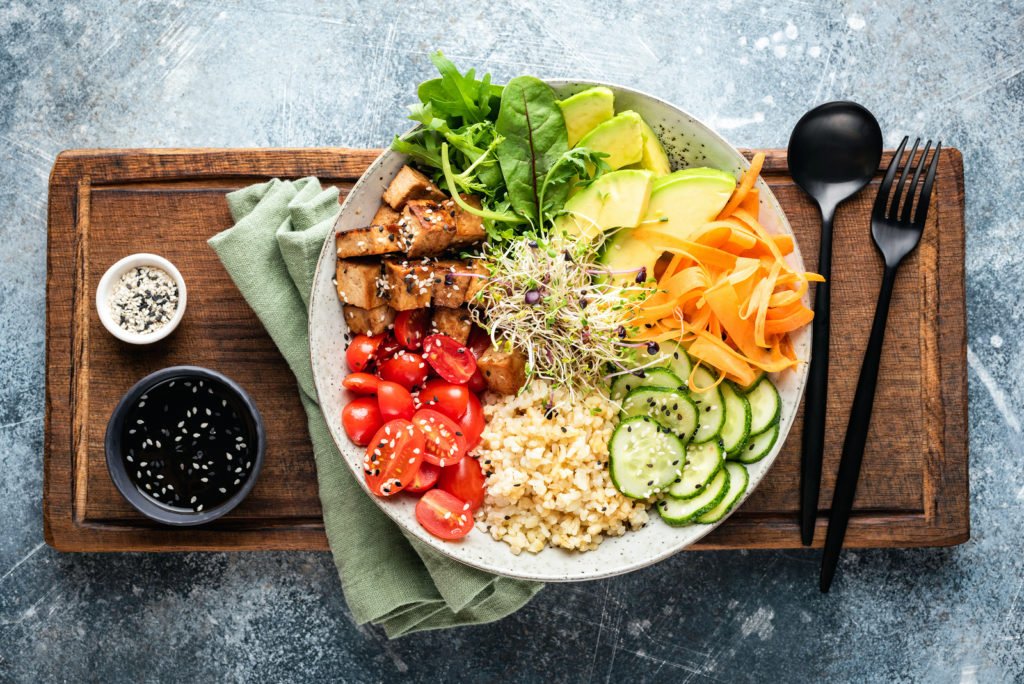The quarantine that’s resulted from the current Coronavirus pandemic has us missing out on a lot. Everything from social gatherings and shopping to gym workouts and doctor visits are suddenly out of reach. While some health issues can be addressed virtually, that’s not the case with chiropractic adjustments. These require an actual office visit – something that, in many areas of the country, aren’t currently available. However, even if you are able to keep regularly scheduled appointments, here are some tips to keep in mind immediately following a chiropractic adjustment.
After an Appointment
After a chiropractic adjustment, you should resist the urge to jump up and hurry out of the doctor’s office. Get up from the chiropractor’s table slowly, avoiding any sudden movements. Although there can be some soreness afterward, you should also resist the urge to rub or probe the adjusted area. The first few hours after an adjustment, you should avoid any strenuous activity.
However, it’s good to keep moving. An easy five or ten-minute walk can be a great post-adjustment activity. It will help keep motion in your spine and let your body get used to the new position resulting from the adjustment. This can be especially helpful if you have a long ride ahead of you, as driving forces our shoulders and arms forward and causes the neck and spine to curve.

Between Appointments
Even under normal circumstances, we sometimes miss our chiropractic appointments for special events, vacations, emergencies, and more. Chiropractic adjustments are not only important for your spine health but to overall health as well. Every cell in your body is controlled by your central nervous system, which is supported by your spine and is responsible for how all the systems operate together within the body as a whole. Whether you’ve missed one or more appointments or just want to make the most of your chiropractic adjustments, there are things you can do.
Regular Exercise
Exercise is important to help maintain your adjustment and ongoing spine health. While we’re not suggesting you should go out and run a marathon, it’s important to strengthen the core and back muscles that support your spine. Gentle exercises such as Pilates or yoga are good options. Stretches and lower back exercises can also be beneficial. However, don’t do any stretches that force your body into an unnatural position or back exercises that extend the spine beyond 180 degrees. Your chiropractor will recommend the proper type and intensity of exercise appropriate for your specific condition and treatment.

Eat Healthy
It’s important to always be mindful of what we put in our bodies. What we eat can have a significant impact on spine health. I personally follow a vegan diet and strongly recommend it.
A vegan diet means making the choice not to eat foods which originate from animals. These include:
- No meat, fish, animal fats or gelatine
- No dairy products such as cheese, butter, yogurt, and milk from cows goats or sheep
- No eggs or foods containing eggs
- Most vegans don’t eat honey, but I do
This may sound overwhelming at first. However, in recent years supermarkets, health food stores and online suppliers now stock a wide variety of non-animal dairy alternatives and vegan ingredients. Check out the freezer section of your supermarket. You’ll find many vegan options there.

A healthy vegan diet consists of eating a variety of the following foods:
- Fruit and vegetables
- Starchy foods, specifically whole grains
- All beans, peas, and lentils for non-dairy protein
- Fortified plant ‘milks’ such as soy or almond milk
Although both vegans and vegetarians can obtain all the necessary nutrients from these foods, there are specific nutrients that should be focused on to avoid deficiencies.
Calcium is necessary for strong bones and teeth. Green, leafy vegetables like spinach and kale, as well as nuts and seeds such as almonds and sesame seeds are good sources of calcium. Many milk and yogurt alternatives are fortified with calcium. Dried fruit such as raisins and prunes are also calcium rich choices.
Vitamin D is required for your body to absorb the calcium necessary for bone health. The best source is the sun. Many breakfast cereals and some spreads are fortified with vitamin D.
Vitamin B12 is vital for blood and nervous system health. Although the primary sources are foods originating from animals, there are vegan-friendly sources such as fortified breakfast cereals, soya milks and yeast extract.
Iron is essential for growth and development. It is required for transferring oxygen around the body. Green leafy vegetables; broccoli, watercress, spinach are great sources for iron as well as grains and seeds such as lentils, quinoa and pumpkin seeds.
Omega-3 fatty acids are an essential component of a healthy, balanced diet. While oily fish is a good source for these, there are vegan options. These include flaxseeds, chia, nuts such as walnuts and their oils as well as cold-pressed avocado oil. Because they provide the body with essential calories and energy so it’s important to eat foods rich in these fats. Some other options are oil-rich hummus, roasted vegetables, tahini, nut butters, and avocados.
If you are ever concerned that you’re lacking any of these nutrients, consult with your physician. They will determine if there are any deficiencies and can recommend supplements that don’t contain animal products.
Whether you’re ready to embrace a vegan lifestyle or just want to make healthier choices by reducing your intake of animal products and processed foods, here are some suggestions for vegan substitutions.
Meat and Fish – Substitute veggie burgers, nut roasts and ingredients such as tofu, tempeh, beans, lentils and mushrooms.
Cow’s milk – Substitute plant milks such as soya, rice, oat, hemp, coconut, hazelnut and almond milk. Look for products fortified with vitamin B12, D and calcium.
Butter – Substitute avocado, olive and coconut oils in cooking. Tahini is a great substitute that can be stirred into salads and pasta or used on bread, crackers and baked potatoes instead of butter..
Yogurt – Substitute soya yogurts and desserts as well as coconut yogurt and coconut cream.
All Dairy and Cheese – Substitute nut or seed butters and plant-based milk alternatives. Avoid vegetable margarines and spreads as they often contain milk derivatives.
A healthy, balanced diet is important to maintaining both your spine and overall spine health.
Chiropractic Adjustments and Quarantine
No doubt, the struggle is real. Making the right choices for your spine and overall health while being stuck at home can be a challenge. Resisting the urge to curl up on the couch, binge watch
television, and indulge in your favorite snacks all day can be tough but don’t do it. Even though the quarantine is meant to protect us from COVID-19, it also has the potential to present us with other health risks such as joint stiffness, muscle atrophy, and weight gain.
Although it might be comfortable, lounging on the couch typically doesn’t involve good posture. It can lead to hours of your spine stuck in an unhealthy position. Your joints will stiffen up due to the lack of exercise. Movement is what gets vital nutrients to our joints, ligaments, and soft tissue that keeps them healthy. Long stretches of inactivity can also cause your muscles to atrophy. This may sound extreme but it can happen more quickly than you think, putting additional pressure on your spine and joints, resulting in pain. While staying active and eating healthy are always important, they are critical to maintaining chiropractic adjustments and overall health during the quarantine.

Healthy Tips for Quarantine
Being stuck at home during the quarantine can make it easy to fall into unhealthy habits such as not getting enough exercise, overeating, and even mess up your sleeping habits. These habits can negatively impact your overall health and some can directly compromise your spine health. Here are some tips to help avoid that from happening.
Stick to your normal schedule. Whether you are working at home during the quarantine or not, it’s important to stick to your normal schedule. Staying up too late or sleeping in too long can mess with your body’s natural circadian rhythm. This can have a negative impact on your energy level, weight, mood, and even the ability to think clearly.
Create or modify your exercise routine. If you normally head to get your workout, look for ways to modify it so you can do it at home. Find household items you can use as weights or substitute some household chores in place of some of your workout routines. Take all the same precautions you would at the gym. Lift properly, bend at your knees, not at your waist, keep your back straight, and don’t overexert yourself. If you weren’t going to the gym, you still need to get some exercise. Go for a walk, take a bike ride, go for a hike. If you can’t do this while practicing social distancing, try an online exercise or yoga class. The important thing is to keep moving.
Stock up on healthy foods. It’s normal to fight the boredom of being stuck at home by snacking or indulging in comfort foods. Stock the refrigerator and pantry with healthy choices. For most people, it’s inevitable that between-meal snacking will increase when stuck at home. However, only having healthy options available and practicing portion control will help minimize any weight gain and prevent you from consuming food with little or no nutritional value.
Limit your screen time. This goes for all your devices, not just the television. Computer, tablet, and phone screens often have you leaning forward and looking down. Too many hours of this will put a strain on the cervical spine resulting in” text neck”. This refers to the tightening and discomfort you’ll feel in your neck and shoulders from being hunched over. Limiting the time you spend on these devices can help prevent those symptoms from becoming more serious. The same goes for the time spent in front of the television. Setting limits will keep you from becoming a couch potato and even help you control your snacking, as this is when much of our mindless eating takes place. We keep munching away with our eyes glued to the screen.
Substitute a few hours or more of screen time with movement, whether it be exercise or household chores.
Keep your body hydrated. This means water. Other liquids such as juice and soda are high in sugar and calories. Coffee and alcohol have the opposite effect and promote dehydration. So when choosing a beverage, opt for water as much as possible. Not only will it keep you hydrated, but it can also help prevent you from overeating by making you feel full. Drinking water contributes to spine health as well. Water keeps the spinal discs full of fluid so they can properly cushion the spine during movement. It also prevents the surrounding muscles from developing lactic acid, which can cause inflammation and lead to nerve compression.
Stay connected. This may sound contradictory after saying you should limit it, but some of your screen time can be used to stay in touch with family and friends. Maintaining connections with those you care about and whose company you enjoy can keep the boredom and isolation of quarantine from becoming overwhelming.
Chiropractic and Spine Health
While all these facts and recommendations aren’t going to replace regularly scheduled appointments with your chiropractor, they can greatly enhance the benefits of those visits anytime – not just when you’re stuck at home. I look forward to the end of this quarantine when I can reopen my office and begin seeing patients again. For now, feel free to reach out or browse my website for more information about spine health and the different treatments I offer. Stay safe and I hope to see you soon!!

